|
Displaying items by tag: henri matisse

When the San Francisco Museum of Modern Art closes on June 2, 2013 for three years worth of renovations and an expansion, the institution will send some of its treasured holdings away. 23 masterpieces by Henri Matisse (1869-1954) won’t have far to travel as they will be exhibited at the Legion of Honor, San Francisco’s museum of European paintings and sculpture.
The Matisse works headed to the Legion of Honor include 16 paintings, 4 sculptures, and 3 works on paper, which will hang in one of the museum’s ground-floor galleries alongside two paintings already in the Legion’s collection. The only Matisse painting that will remain off view is Femme au Chapeau (1905) as the terms of its bequest by philanthropist Elise S. Haas state that the painting cannot travel.
Although details are still vague, the Legion of Honor will host two relevant shows while exhibiting the Matisse works – one will be a retrospective of Matisse’s older contemporary, Anders Zorn (1860-1920), and the other will be a survey of French paintings on loan from the National Gallery of Art in Washington, D.C.

The Baltimore Museum of Art has organized the first exhibition devoted to the Jewish-American artist Max Weber’s (1881-1961) formative years in Paris. Born in Russia, Weber emigrated to the United States at the age of 10. In 1905, after studying at the Pratt Institute in New York, he traveled to Paris. Weber soon became acquainted with a number of important modern artists including Henri Matisse (1869-1954), Pablo Picasso (1881-1973), and Henri Rousseau (1844-1910). Upon his return to New York in 1909, Weber helped introduce cubism to America.
Max Weber: Bringing Paris to New York explores Weber’s transformation from a classical painter to a bold, pioneering artist. The exhibition features over 30 paintings, prints, and drawings by Weber, many of which are on loan from the Estate of Max Weber. The show includes works by Matisse, who spent time as Weber’s instructor, Picasso, Rousseau, Paul Cezanne (1839-1906), and Henri de Toulouse-Lautrec (1864-1901).
Today, Weber is not the artist most readily associated with the cubist movement. However, at the peak of his career, Weber was a bona fide celebrity; in 1930 he became the first American artist to be given a solo exhibition at the Museum of Modern Art in New York.
Max Weber: Bringing Paris to New York is on view through June 23, 2013.
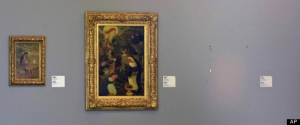
A 46-year-old German man was arrested by authorities in connection to the devastating art heist that took place in the Netherlands on October 16, 2012. The man was arrested in southwestern Germany for allegedly trying to sell the seven stolen paintings back to the Triton Foundation, the owner of the artworks.
The paintings, which include masterpieces by Pablo Picasso (1881-1973), Claude Monet (1840-1926), Henri Matisse (1869-1954), and Paul Gauguin (1848-1903), were on view at the Kunsthal Museum in the Netherlands and have yet to be recovered. The bounty, which includes Picasso’s Harlequin Head (1971), Monet’s Waterloo Bridge, London and Charing Cross Bridge, London (1901), and Matisse’s Reading Girl in White and Yellow (1919), is believed to be worth between $66 million and $266 million.
This is the fifth arrest made in connection to the heist; three Romanian men accused of carrying out the heist were arrested on January 22, 2013 and a Romanian woman was arrested on March 4, 2013 on suspicion of assisting the robbers. Officials are working to determine whether the German suspect had ties to the stolen paintings or was simply trying to scam the Triton Foundation. He was arrested on the grounds of suspected blackmail and is currently under investigation.
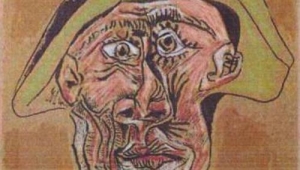
A Romanian woman has been arrested in Rotterdam in connection to an art heist that rocked the Netherlands in October 2012. The 19-year-old woman, who is the girlfriend of one of the three suspects currently being held in Romania for alleged involvement in the heist, is thought to have helped the thieves haul the seven stolen masterpieces out of the country.
Police claim that after the robbery, the paintings were taken to a home in Rotterdam where the frames were removed. The paintings were later taken to Romania where prosecutors are investigating the mother of one of the suspects who claims that she burned two of the stolen works.
The robbery, which took place at the Kunsthal museum, was the biggest art theft in two decades in the Netherlands. The stolen works, which are part of the private Triton Foundation collection, include masterpieces by Pablo Picasso (1881-1973), Claude Monet (1840-1926), Henri Matisse (1869-1954), and Paul Gauguin (1848-1903) and are believed to be worth between $66 million and $266 million. Among the masterpieces lifted by the thieves were Picasso’s Harlequin Head (1971), Monet’s Waterloo Bridge, London and Charing Cross Bridge, London (1901), and Matisse’s Reading Girl in White and Yellow (1919).
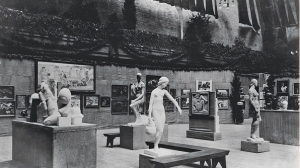
The 1913 International Exhibition of Modern Art, referred to today as the Armory Show, was one of the most influential art events to take place during the 20th century. The show, which was held in New York City’s 69th Regiment Armory, introduced the American public to experimental European art movements including Fauvism, Cubism, and Futurism. While realistic movements dominated the country’s art scene, works by Pablo Picasso (1881-1973), Henri Matisse (1869-1954), Wassily Kandinsky (1866-1944), and Marcel Duchamp (1887-1968) left the Armory Show’s American visitors awestruck.
On February 17, 2013, 100 years after the Armory Show took place, the Montclair Art Museum in Montclair, New Jersey presented The New Spirit: American Art in the Armory Show, 1913. The exhibition does more than just celebrate the significant art event; it commends the American artists who presented two-thirds of the nearly 1,200 works on view. While European art was a hugely important part of the Armory Show, The New Spirit aims to disprove the notion that the American art featured at the show was largely provincial.
The New Spirit brings together 40 diverse works of American modern art including realist works from the Ashcan School as well as more experimental pieces executed by the painters associated with the influential photographer and art dealer, Alfred Stieglitz (1864-1946). The Montclair exhibition presents works by well-known artists such as Edward Hopper (1882-1967), William Glackens (1870-1938), Marsden Hartley (1877-1943), Charles Sheeler (1883-1965), Robert Henri (1865-1929), and John Marin (1870-1953) alongside works by lesser-known artists including Manierre Dawson (1887-1969), Kathleen McEnery (1885-1971), and E. Ambrose Webster (1869-1935). The exhibition will also feature works by Paul Cézanne (1839-1906) and Matisse to illustrate the influence of European modern art on its American counterpart.
The New Spirit will be on view through June 16, 2013.
A major exhibition titled Ice Age Art: Arrival of the Modern Mind is now on view at the British Museum in London. With works dating as far back as 40,000 years, the show presents ice age objects from across Europe alongside works by modern masters including Henry Moore (1898-1986), Piet Mondrian (1872-1944), and Henri Matisse (1869-1954). The juxtaposition is meant to illustrate the fundamental human desire to explore life and oneself through art.
Many of the ice age-era works on view are made of mammoth ivory and reindeer antler and tend to be diminutive in stature. Highlights include a 40,000-year-old flute made from a vulture’s wing bone, a mammoth tusk carved to resemble a pair of reindeer, and a 23,000-year-old abstract ivory sculpture found in Lespugue, France that had a profound influence on Pablo Picasso’s (1881-1973) sculptural work of the 1930s.
The works, which range from 10,000 to 40,000 years old, will be on view through May 26, 2013.
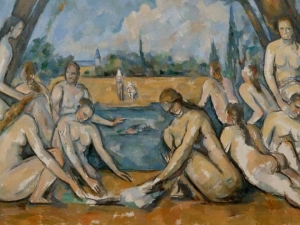
Paul Cézanne’s (1839-1906) The Large Bathers is currently on view at the Museum of Fine Arts, Boston. The work, which is on loan from the Philadelphia Museum of Art, is being exhibited alongside the MFA’s own Where do we come from? What are we? Where are we going? by Paul Gauguin (1848-1903).
The Large Bathers, painted in France between 1900 and 1906, is considered one of the most ambitious of Cézanne’s many works exploring the theme of nudes in a landscape. Serene and idyllic, the painting was left unfinished at the time of Cézanne’s death.
Gauguin’s Where do we come from? What are we? Where are we going?, which was painted between 1897 and 1898, also features nudes in a landscape, but as means to illustrate the inevitable passing of time. Upon its completion, Gauguin said, “I believed that this canvas not only surpasses my preceding ones, but that I shall never do anything better – or even like it.” Gauguin attempted suicide after finishing the painting but was unsuccessful.
Exhibited together for the first time in Boston, Large Bathers and Where do we come from? What are we? Where are we going? bridged the gap between art of the 19th and 20th centuries. In doing so, Cézanne and Gauguin influenced a generation of modern artists including Pablo Picasso (1881-1973) and Henri Matisse (1869-1954).
The two paintings will be on view at the MFA through May 12, 2013.
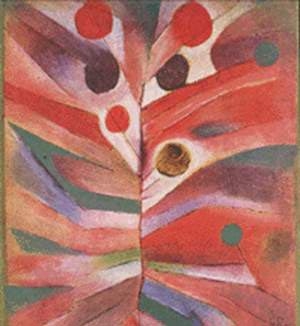
The heirs of Alfred Flechtheim, a prominent Jewish art dealer who fled Nazi Germany during World War II, are urging the German state of North-Rhine Westphalia to return artworks belonging to their relative. The paintings in question, which are by Paul Klee (1879-1940) and Juan Gris (1887-1927), are currently part of the Kunstsammlung Nordhein-Westfalen’s collection in Dusseldorf.
Before the perils of World War II took hold, Flechtheim was an established art dealer in Europe, representing a variety of well-known artists including Klee, Max Beckmann (1884-1950), and a number of French Cubists. Flechtheim ran galleries in Dusseldorf and Berlin, organized many exhibitions, and founded an art magazine. However, Flechtheim’s high standing in the art world made him an easy target for the Nazis. He fled Germany in 1933 shortly after a stream of hateful articles ran in the Nazi press. Flechtheim escaped to Zurich, then Paris before settling in London. After his getaway, Flechtheim’s Dusseldorf gallery was seized and turned over to his former employee Alex Voemel, a Nazi. Flechtheim’s gallery in Berlin was liquidated and his collection, which included works by Pierre-Auguste Renoir (1841-1919), Wassily Kandinsky (1866-1944), Fernand Leger (1881-1955), Georges Braque (1882-1963), and Henri Matisse (1869-1954), was sold.
Mike Hulton, Flechtheim’s great-nephew, claims that Klee’s Feather Plant (1919) and Gris’ Still Life (Violin and Inkwell) (1913) were part of Flechtheim’s private collection and sold under duress for well below their value when he fled Germany. The Kunstsammlung Nordhein-Westfalen does not believe there is enough evidence to support Hulton’s claim. In addition, owners of archives that could help in the case are refusing to let provenance researchers access their information, bringing the dispute to a standstill. Officials from the Kunstsammlung Nordhein-Westfalen assert that if it was proven that Flechtheim was forced to sell the works by Gris and Klee or that he received little to no money for them, that they would part with the paintings, but the current evidence is inconsequential.
Flechtheim’s heirs are currently pursuing restitution for over 100 paintings in museums in the United States, France, Germany, and other European countries.
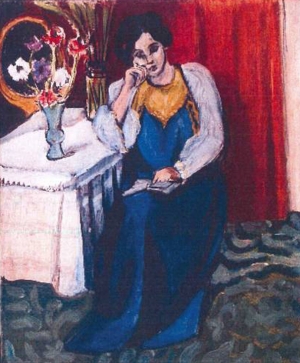
Romanian authorities have arrested three suspects relating to an art heist at the Kunsthal museum in the Netherlands. The robbery, which occurred October 16, 2012 at around 3AM, was the biggest art theft in two decades in the Netherlands. The stolen works include masterpieces by Pablo Picasso (1881-1973), Claude Monet (1840-1926), Henri Matisse (1869-1954), and Paul Gauguin (1848-1903) and are believed to be worth between $66 million and $266 million. The paintings have not yet been recovered.
While little is being revealed about the arrests or the suspects, it has been reported that three men are being detained for 29 days at the request of prosecutors from the Romanian Directorate for Investigating Organized Crime and Terrorism. The suspects’ involvement is still being explored, but officials believe the stolen works might be hidden in an undisclosed location in Romania.
The seven stolen paintings, which are part of the private Triton Foundation collection, include Picasso’s Harlequin Head (1971); Monet’s Waterloo Bridge, London and Charing Cross Bridge, London (1901); Matisse’s Reading Girl in White and Yellow (1919); Gauguin’s Girl in Front of Open Window (1898); Meyer de Haan’s (1852-1895) Self Portrait (circa 1890); and Lucian Freud’s (1922-2011) Woman with Eyes Closed (2002). The Triton collection, which was assembled over the course of 20 years, includes more than 150 works of modern art ranging from the 19th century to the present day and spans a number of important art movements.
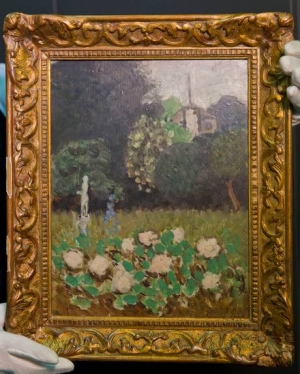
A painting worth $1 million by the French artist Henri Matisse (1869-1954) was recovered in Essex, England. Stolen from the Museum of Modern Art in Stockholm in 1987, the location of Le Jardin (1920) has remained a mystery for more than twenty years.
The discovery occurred when British art dealer Charles Roberts of Charles Fine Art was offered the Matisse painting by a Polish collector. Roberts ran a search on the Art Loss Register (ALR) database, a hub for information regarding stolen artworks, and found Le Jardin listed. Christopher A. Marinello, executive director and general counsel of the ALR, facilitated the painting’s recovery and it is currently being held in the organization’s office before being returned to Sweden in the coming weeks.
Le Jardin was the only artwork stolen during the 1987 burglary when thieves broke through the museum’s front entrance with a sledgehammer and unscrewed it from the wall. The burglars escaped just minutes before private guards arrived to investigate the scene. Following the robbery, the thieves made several attempts to sell the painting back to the museum for an exorbitant sum. Museum officials resisted, knowing that the Matisse painting was too well known to sell on the open market and that it would resurface eventually.
|
|
|
|
|